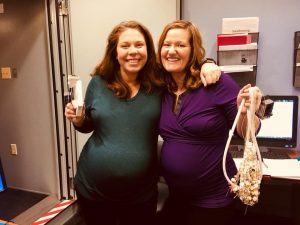Jennine Harvey-Northrop, assistant professor in the Department of Communication Sciences and Disorders at Illinois State University, and Megan Cuellar, associate professor in the Department of Speech-Language Pathology at Midwestern University, are investigating the effects of multitasking on the brain, across normally aging adults. This research is the result of a five-year cross-university collaboration with Midwestern University.
As the baby boomer population continues to age, the demand for assessment and intervention of cognitive and hearing-related performance is increasing as is the need for novel and refined tools to ensure aging individuals maintain the greatest overall functioning for activities of daily living.
The overall goal of the multitasking, or dual-task, research line is to establish the most effective and efficient diagnostic and intervention procedures for older individuals with hearing and/or cognitive loss for use by both audiologists and speech-language pathologists. While dual-task methodologies are commonly used across multiple disciplines, cognitive and perceptual factors vary considerably, making it difficult to establish consistent, hierarchical tasks in research that can be translated for clinical practice.
As a result of five years of data collection, the researchers have established a hierarchal dual-task protocol for application to assessment and intervention in clinical practice (Harvey, Wilson, Cuellar, & Anaya, 2017; Harvey, vonHapsburg, & Seeman 2017). Additionally, individuals may be able to purposefully manipulate responses during intervention and activities of daily living (Harvey, Wilson, Cuellar, & Anaya, 2017). Overall, the study of cognition through dual-task methods has resulted in actionable recommendations for modification to assessment and intervention practices in the field of speech-language pathology.
The researchers are now examining EEG data across normally aging individuals and individuals with adult neurogenic communication disorders to establish neurophysiological data baselines for the behavioral data collected so far. Capturing and utilizing both data types is innovative and needed to advance evidence-based practice in the researchers’ field.


